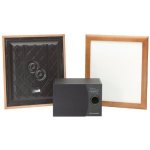...
Do people choose their news station and newspapers because they are the most accurate or fair? Or do they choose it because it presents news in a manner which reinforces our own biases?
...
Hello,
i guess you have given the answer with the second
question ... it seems to be a very human
behaviour to stick to ones preferences.
The common "quasi point source" 2..3 way speaker,
with its almost typical and frequency dependent
radiation pattern has become the de facto standard
for home listening. Even if the typical artefacts are
not present, the "common" listener will miss them.
I like to ask the question the other way round:
Which group of listeners could be interested in panel
form bending wave loudspeakers ?
If we talk about systems having dipole radiation pattern
in the bass to midrange region, there are some people
already used to ESL and planar magnetics.
This is a group being less "reserved" to try out this
concept, because it is not too far away from what they
know already, and many are convinced by the advantages
of those concepts.
People interested in my own panel form BWL often have
ESL or planar magnetics at home. Often they are
looking to overcome the drawbacks present
with many systems, like being nailed to a sweetspot
when listening and speakers being very sensitive to
any change of speaker/listener position or changes
to the room or moving the speakers to a different room.
But that also means to me - if i want some listeners
of that group being my future customers - my BWL
have to compete with very good systems of the mentioned
technologies - including resolution and naturalsness even
IN the sweetspot of their known systems.
I slowly got there, as time and money goes by, there are
currently those "little improvements" which show me
from time to time, that i have not fully understood by now
all of the issues having some level of importance
for quality. And i do not believe this process will ever
come to an end, it is simply "ongoing".
But i am at the level of fine tuning and "small" changes
now.
Developing ESL or planar magnetics is not an an easy task
too, as stated from many professionals and DIY'ers in
here and usually there are only a few designs which really
excel.
Even using electrostatic drive of the membrane does not
guarantee proper impulse response or balanced dispersion.
In the end - besides the base concept - it is the
multitude of tricks and ideas builtin to a system, which
make up its total quality as a synergetic effect. And it
has a lot to do with finding appropriate materials and
treat them in the right way.
Last but not least, it is quite a step from early prototypes,
which work well, to a regularly manufacturable speaker
having low series tolerances by reproducible
manufacturing processes.
I guess that many speaker/transducer developers will
subscribe that last statement, whatever transducers
they make.
That may be a "quantum of solace" ...
Kind Regards
Which group of listeners could be interested in panel form bending wave loudspeakers ?
1. Panel converts as you already mentioned.
2. Box people looking for something different - this may be decor motivated.
3. H.T. people, I'm just thinking they would make great side or rear surround speakers too.
4. A dedicated subwoofer panel may also be another way to introduce wave speaker technology. I'm thinking it would best be covered in projection screen material and be the screen...............or hung/suspended from the ceiling (guessing it would be too large for any other installation). If suspended from the ceiling like a cloud, one could do built-in lighting around the edges and call it a light fixture to the unknowing.
5. I have dozens of ideas like this, the problem is time and money as you have already mentioned.
bending wave panel applications
Hello, just let me add some comments on your ideas,
although your suggestions are valid in my view:
- Box people looking for something different - this may be decor motivated.
Yes, but the typical "hideaway the speakers" listener is
usually not the one having very high priority for his hobby
... at least not from my "european experience".
He will presumably not spend a higher amount of money
for a high quality panel speaker. And this is IMO the only
thing you can go to market with, since mediocre panels
are already available from many suppliers.
- H.T. people, I'm just thinking they would make great side or rear surround speakers too.
They do !
Side or rear surround is already a "classical" field of
application for panel form speakers, even for mediocre
quality ones, because they do the "diffuse soundfield"
job very well.
Btw. even electronic stretching of reverberation time in
concert halls is a proven application ...
- A dedicated subwoofer panel may also be another way to introduce wave speaker technology. I'm thinking it would best be covered in projection screen material and be the screen...............
My current panels have bass extension down below
30 Hz, if the room is large enough and speakers are
well positioned. But if you would project a picture on
them, i fear it will "chatter" at higher volume,
since there is up to +/- 4mm of excursion currently.
Maybe with a very large panel it will be doable, i have
not investigated effects of "screen vibration" on
optical perception ... you have to take into account,
that there are 20 pictures or so per second, so the
vibrational modes could disturb viewing the picture
by stroboscope effects.
Just speculation, but for "subwoofer screen" application
that should be tested IMO. If excursions are low it
should not be any problem.
The use of multi actuator panels as a screen is an
already known application too. You can even project
stereo sound using a single "screen panel" having
multiple actuators.
Cheers
Hello, just let me add some comments on your ideas,
although your suggestions are valid in my view:
- Box people looking for something different - this may be decor motivated.
Yes, but the typical "hideaway the speakers" listener is
usually not the one having very high priority for his hobby
... at least not from my "european experience".
He will presumably not spend a higher amount of money
for a high quality panel speaker. And this is IMO the only
thing you can go to market with, since mediocre panels
are already available from many suppliers.
- H.T. people, I'm just thinking they would make great side or rear surround speakers too.
They do !
Side or rear surround is already a "classical" field of
application for panel form speakers, even for mediocre
quality ones, because they do the "diffuse soundfield"
job very well.
Btw. even electronic stretching of reverberation time in
concert halls is a proven application ...
- A dedicated subwoofer panel may also be another way to introduce wave speaker technology. I'm thinking it would best be covered in projection screen material and be the screen...............
My current panels have bass extension down below
30 Hz, if the room is large enough and speakers are
well positioned. But if you would project a picture on
them, i fear it will "chatter" at higher volume,
since there is up to +/- 4mm of excursion currently.
Maybe with a very large panel it will be doable, i have
not investigated effects of "screen vibration" on
optical perception ... you have to take into account,
that there are 20 pictures or so per second, so the
vibrational modes could disturb viewing the picture
by stroboscope effects.
Just speculation, but for "subwoofer screen" application
that should be tested IMO. If excursions are low it
should not be any problem.
The use of multi actuator panels as a screen is an
already known application too. You can even project
stereo sound using a single "screen panel" having
multiple actuators.
Cheers
Last edited:
Great post, I have seen a few of the Patents of the items you talk about, but not an actual product in the market.
RE:
2. Box people looking for something different - this may be decor motivated.
I'm thinking about the people who go from a rather conventional box into a sexier Industrial Design package by B&O, Jamo or God forbid Bose.
The "decor" factor of a panel speaker is high in my opinion despite their overly 2-dimensional size. Then again much to my surprise someone in a forum called Magnepan's ugly. Thin is beautify in my eyes so I never understood that one opinion.
RE:
2. Box people looking for something different - this may be decor motivated.
I'm thinking about the people who go from a rather conventional box into a sexier Industrial Design package by B&O, Jamo or God forbid Bose.
The "decor" factor of a panel speaker is high in my opinion despite their overly 2-dimensional size. Then again much to my surprise someone in a forum called Magnepan's ugly. Thin is beautify in my eyes so I never understood that one opinion.
A new to me patent, much as been described.
Acoustic device - US 7564984 B2 - IP.com
...................................................................................
Another NXT:
Amazon.com: Wharfedale LoudPanel Wall Speaker (Natural Wood Frame with Black Subwoofer): Electronics
Acoustic device - US 7564984 B2 - IP.com
...................................................................................
Another NXT:
Amazon.com: Wharfedale LoudPanel Wall Speaker (Natural Wood Frame with Black Subwoofer): Electronics
Attachments
Last edited:
Glass.................another type of wave speaker?
Video in link.
Greensound Technology Glass Speakers
Greensound Technology Glass Speakers | Ultimateavmag.com
Video in link.
Greensound Technology Glass Speakers
Greensound Technology Glass Speakers | Ultimateavmag.com
Hi there,
I ran into this NXT (DML) concept recently and found it so interesting. I've done some trial setups, and posted here:
NXT.......rubbish??....THINK AGAIN!
(-- which is a very long thread full of DIY enthusiasts about this topic)
Initial impression was very good (even compared with my previous horns/dipole active multi-way system):
1) excellent coherence, thus top notch transient response and crisp sounds
2) large emitting area and almost omni radiation brings lifelike imaging and spaciousness
However there's no free lunch. All kinds of problems are also coming along:
a) panel material itself is critical (my current PS foam board has a nasty peak at 6.3kHz)
b) not enough bandwith for real fullrange
So, for a really good system, there're still a lot of works to do in panel damping, bass augmentation, overall integration... etc. I think the difficulties are no less than other solutions, not at all...
Nevertheless, the simple (and elegant) build, low cost, and whole new presentation (compared to ordinary speakers), excellent sound quality... etc remain to be very desirable.
I ran into this NXT (DML) concept recently and found it so interesting. I've done some trial setups, and posted here:
NXT.......rubbish??....THINK AGAIN!
(-- which is a very long thread full of DIY enthusiasts about this topic)
Initial impression was very good (even compared with my previous horns/dipole active multi-way system):
1) excellent coherence, thus top notch transient response and crisp sounds
2) large emitting area and almost omni radiation brings lifelike imaging and spaciousness
However there's no free lunch. All kinds of problems are also coming along:
a) panel material itself is critical (my current PS foam board has a nasty peak at 6.3kHz)
b) not enough bandwith for real fullrange
So, for a really good system, there're still a lot of works to do in panel damping, bass augmentation, overall integration... etc. I think the difficulties are no less than other solutions, not at all...
Nevertheless, the simple (and elegant) build, low cost, and whole new presentation (compared to ordinary speakers), excellent sound quality... etc remain to be very desirable.
Could this be another "Bending Wave" loudspeaker?
VAF SoundWall - Soundwall - Loudspeakers - VAF Research

VAF SoundWall - Soundwall - Loudspeakers - VAF Research

VAF’s SoundWall™(Patent) concept comprises three individual module types: a Speaker module, an Acoustic Treatment module, and a Bass module. These can be used in any combination to suit the unique needs of every single room.
Other than marketing bragging, too little information.
What a shame.
There is enough information -- Wonder Wall - Soundwall - Loudspeakers - VAF Research -- but it is not aligned with the topic of this thread. It is an in-wall cone-and-dome system.
Adding to this thread after a long absence...............it was sort of a "random flat speaker thread" as I recall, at least in practice.
3. Flat Panel Speakers
Gayatri Business Solution ( Gayatri Solution Group ): August 2013
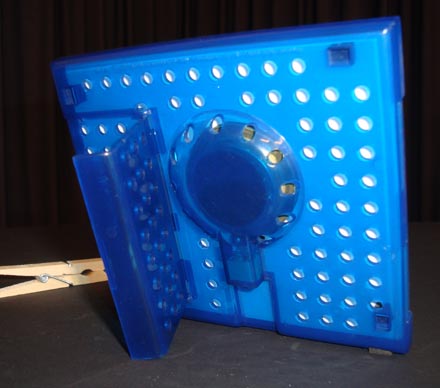
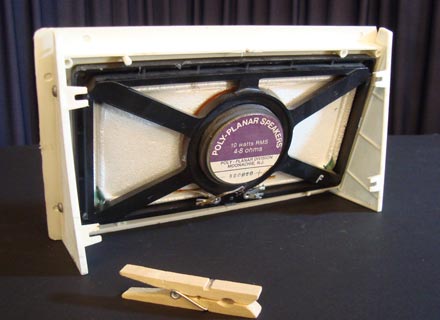
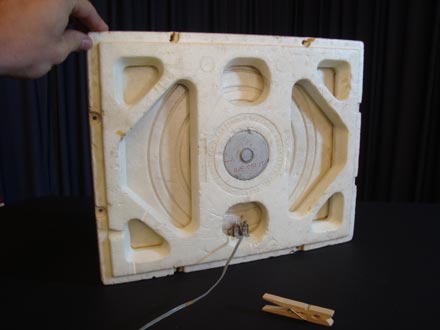
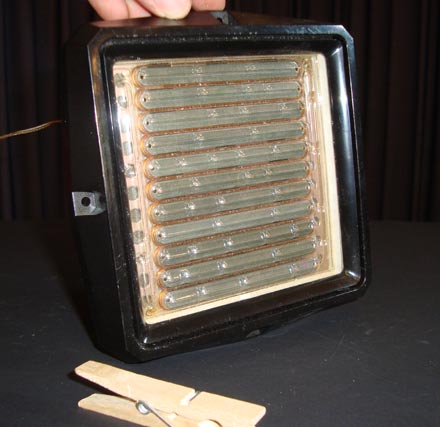
An interesting blog, check it out for more text and pictures.
3. Flat Panel Speakers
Gayatri Business Solution ( Gayatri Solution Group ): August 2013
Flat Panel Speakers use voice coils or other apparatus mounted to flat panels to act as the source of sound. The flat panel acts as a diaphragm. Below are some examples of different designs. Different materials can be used as a diaphragm, from vinyl to Styrofoam. This is different from a diaphragm speaker in that the moving voice coil is not wrapped around the same material as the flat panel. The panel part is adhered to the coil assembly.............




An interesting blog, check it out for more text and pictures.
Some more fun......................and a darn good explanation for one type.
https://www.toysperiod.com/blog/toy-history/a-brief-history-of-audio-speakers/

https://www.toysperiod.com/blog/toy-history/a-brief-history-of-audio-speakers/

Flat panel speakers operate in a world of chaos called "psychoacoustics." In other words, the magnet-coil assembly moves so slightly that one cannot see it with the naked eye (40 microns). The rigid panel is just nudged to begin bending sound waves that travel literally in all directions.
The goal of traditional speakers is to produce sound faithfully.
Not so with the flat panel speakers. These speakers produce sound waves so diffuse that there is no perfect listening position so beloved by audiophiles.
On the other hand, with flat panel speakers, one can easily walk around a room and have the same sound levels throughout. This has many applications for public address systems and other applications that aren't competing for the 100% "presence" that audiophiles demand.
Although I'm more committed to DIY'ing Walsh radiators (and likely will be committed for doing so *L*), I'm intrigued by the DML concept and have toyed with using aluminum honeycomb panels as the driven surface. I do think that they've possibilities; others certainly think so:
Layered Sound
...and especially these folks:
Revolutionary flat panel professional speakers | Tectonic Audio Labs
(Tectonica is mating their p.a. panels with a AMT/Heil style HF driver...a good call IMHO...)
Anyway....drop me a PM if y'all'd like to discuss...here, there, 'wherever' *G*
I'd like to explore what means of surround would work on a DIY basis....
Layered Sound
...and especially these folks:
Revolutionary flat panel professional speakers | Tectonic Audio Labs
(Tectonica is mating their p.a. panels with a AMT/Heil style HF driver...a good call IMHO...)
Anyway....drop me a PM if y'all'd like to discuss...here, there, 'wherever' *G*
I'd like to explore what means of surround would work on a DIY basis....
Nice links "jerryrigged", lots of reading information in that last one/
Professional Distributed Mode Loudspeakers |
System Overview | Tectonic Audio Labs
System Overview | Tectonic Audio Labs
I really wish there were more pictures or diagrams, I'm a visual person.
I'm finding even less information on the Podium Sound FD series "Layered Sound".
Professional Distributed Mode Loudspeakers |
System Overview | Tectonic Audio Labs
System Overview | Tectonic Audio Labs
I really wish there were more pictures or diagrams, I'm a visual person.
I'm finding even less information on the Podium Sound FD series "Layered Sound".
kach, nice combo there, ML's & 'fire bottles'  . Although a 'solid state' sort myself, I can appreciate what you're listening to...they're naturals, and belong together....*G*
. Although a 'solid state' sort myself, I can appreciate what you're listening to...they're naturals, and belong together....*G*
Personally, I'm an omni (Walsh) nut...DIY'ing a clone of the German Physiks currently. But I like dipoles and (nearly) anything that creates a better 'soundstage', a more 'lifelike' rendition of the recorded experience, be it 'live' or studio. (Yeah, I know...studio is subject to all sorts of tech tricks, but one hopes they had something in mind when they mixed it all down...). I've had some fun mixing my Walsh clones with my ersatz 'line array', combining their 'strengths' just to see what occurs....
Since I've not been lucky enough to be present in the presence of a 'high end' set of DML's, I've been curious as to how they actually present an 'image', if you will, of recorded music of various 'tastes' and 'flavors' (I 'trend' towards things of my lifespan, if you get my drift...*S*). I'd like to 'blend' the reported fields of a DML array with a Walsh array to see if it can be 'controlled'....
Can I put the vocalist to where they're standing in front of you? Can we put the drum kit THERE, and make it stay put? The synths are 10' to your right, 6' back....
Can this be done without having to cover all the walls with damping? Can we make the 'sweet spot' a thing of the past? I have a multi-channel amp with delays on all channels, and enough eq to blend sand with oatmeal.*L* We're in an age of digital magic, and we can make the speakers respond Exactly not only to the recording, but to the room they're in. I think we're all ready to make the Next Step....
But, that's my hallucinationatory fascination of late...since I can't talk my way onstage, nor afford front row tickets. *L*
Personally, I'm an omni (Walsh) nut...DIY'ing a clone of the German Physiks currently. But I like dipoles and (nearly) anything that creates a better 'soundstage', a more 'lifelike' rendition of the recorded experience, be it 'live' or studio. (Yeah, I know...studio is subject to all sorts of tech tricks, but one hopes they had something in mind when they mixed it all down...). I've had some fun mixing my Walsh clones with my ersatz 'line array', combining their 'strengths' just to see what occurs....
Since I've not been lucky enough to be present in the presence of a 'high end' set of DML's, I've been curious as to how they actually present an 'image', if you will, of recorded music of various 'tastes' and 'flavors' (I 'trend' towards things of my lifespan, if you get my drift...*S*). I'd like to 'blend' the reported fields of a DML array with a Walsh array to see if it can be 'controlled'....
Can I put the vocalist to where they're standing in front of you? Can we put the drum kit THERE, and make it stay put? The synths are 10' to your right, 6' back....
Can this be done without having to cover all the walls with damping? Can we make the 'sweet spot' a thing of the past? I have a multi-channel amp with delays on all channels, and enough eq to blend sand with oatmeal.*L* We're in an age of digital magic, and we can make the speakers respond Exactly not only to the recording, but to the room they're in. I think we're all ready to make the Next Step....
But, that's my hallucinationatory fascination of late...since I can't talk my way onstage, nor afford front row tickets. *L*
Seriously, I don't see much 'useful' stuff 'out there', either... Which makes it a DIYer's paradise or hell, I suppose...*G*
I've been considering getting a pair of drivers from Parts Excess and some aluminum honeycomb sheets from an eBay source (although they're actually nearby to me....but won't admit it over the phone, go figure that out...?) for the panels. Suspension of the panels is the stumbling block, as I'd like to make them fairly large (2' x 4' ish each) to really give 'em a go. I've been using EVA foam on my Walsh's with good results, so there's a start...
Any thoughts, opinions, absurdvations? *L*
I've been considering getting a pair of drivers from Parts Excess and some aluminum honeycomb sheets from an eBay source (although they're actually nearby to me....but won't admit it over the phone, go figure that out...?) for the panels. Suspension of the panels is the stumbling block, as I'd like to make them fairly large (2' x 4' ish each) to really give 'em a go. I've been using EVA foam on my Walsh's with good results, so there's a start...
Any thoughts, opinions, absurdvations? *L*
"Spanish Stroll" by Mink DeVille....
Quote: "We add a large-format HF ribbon and shallow wave-guide to assure high frequency fidelity..."
It's called a Heil, or a variant thereof... I own a pair. They're excellent, and I'm taking them with me when I shuffle off this immoral coil...*L* Stack them up, and you can make the iris's of the back rows flinch.
As for the Soundwalls posted earlier....Likely a DML system. They've broken the images shown into modules, as they've noted, that attach to a backing panel of 12mm/ 1/2" nom. MDF (probably....that's what I'd use...cheap, dense...). The images are probably wide-format vinyl prints, the same you see plastered on buses, cars, floors, signs. Hell, I use them, but not for photo
imagery.... You can print anything on them you can put into a 'puter, as big as you'd care to and can afford.
Nice looking stuff....thanks for the link. *G*
Quote: "We add a large-format HF ribbon and shallow wave-guide to assure high frequency fidelity..."
It's called a Heil, or a variant thereof... I own a pair. They're excellent, and I'm taking them with me when I shuffle off this immoral coil...*L* Stack them up, and you can make the iris's of the back rows flinch.
As for the Soundwalls posted earlier....Likely a DML system. They've broken the images shown into modules, as they've noted, that attach to a backing panel of 12mm/ 1/2" nom. MDF (probably....that's what I'd use...cheap, dense...). The images are probably wide-format vinyl prints, the same you see plastered on buses, cars, floors, signs. Hell, I use them, but not for photo
imagery.... You can print anything on them you can put into a 'puter, as big as you'd care to and can afford.
Nice looking stuff....thanks for the link. *G*
I bought some "exciters" for sticking on foamcore board a few years ago, but never got around to doing my experiments.As for the Soundwalls posted earlier....Likely a DML system.
As far as room treatments, the near 360 degree radiating pattern speakers (open baffle, dipoles etc...) it depends on how true to 360 they are, 180 + 180 does not always equal 360.
What I mean is; in a true near to 360 pattern there are no "hot spots" of energy as dispersion is so equal. Perhaps I enjoy the 3D sound more than the distractions others get consumed by, just the way my ears work.
In a more traditional dipole or rear firing bi-pole need of diffraction behind the speaker is essential, some absorption (often between the speakers not directly behind them in my experience) is advised.
My criticism of the point source Wash approach is the lack of scale, lack or ability to load the room with grand sound pressure levels.
If one likes compact mini monitors and the intimacy or immediacy they afford, then they should check out the Wash because it's like an electrostatic for small rooms.
It's been far too long since I've heard a Walsh so forgive me if I'm wholly inaccurate in my assessment. Just going off of dying memories from long ago. I do like them, would be nice to have an extra room to place a pair in.
My favorite "point source" speaker was the Melior One by Musetex.
Old thread on that:
Museatex - it was a heck of a ride
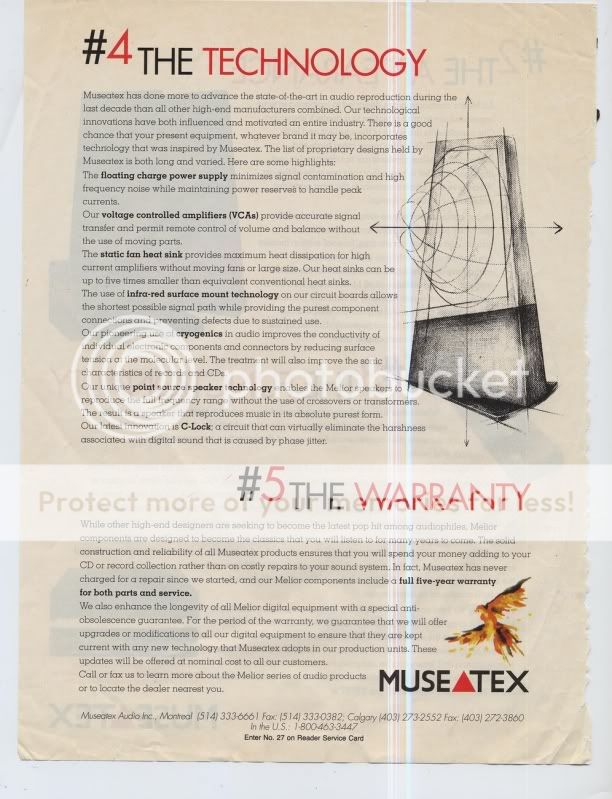
Last edited:
Interesting read, little different then a regular BMR and could possibly be used as BMR or pure pistonic driver. Haven't read through it yet, so don't now the complexity of making the magnetic membrane and if it can be diy'able.
http://pubs.rsc.org/en/content/articlepdf/2013/tc/c3tc31748j
http://pubs.rsc.org/en/content/articlepdf/2013/tc/c3tc31748j
...and Happy 2016...
...and aren't we glad the holidaze are over...
Haven't meant to go mute on you, K...just preoccupied. *G*
What I've noticed with Walsh's is if you want loud, more than one radiator (or pairs) is an answer....'scaling up', if you will. German Physiks does it with their higher end offerings, running a carbon fiber and titanium driver pair in tandem. Since it's been noted that the different materials have a slightly different 'voice' to them, it's one response which for them makes sense...
I'm currently running two pairs with aluminum cones. They play loud enough to force the receiver into overload, although it's due partially to their impedance (2.5 ohms) if I get energetic with them. My next iteration will address that odd ohmage, and be driven by a more robust amp that should be able to cope with their demands. One of the side effects of modifying existing drivers is heat, since I'm asking a voice coil to do something rather different...
But that's 'off topic' for this space, and I'm way too prone to drift off course...*G*
Pepe, thanks for that pdf, Fascinating....DIY, ehhhh, I don't think so unless that membrane suddenly shows up on eBay. *L* And that's not likely
IMHO... It seems tricky enough for one to DIY EL screens properly, what with smearing them with carbon evenly. Doing that with some sort of magnetic dust that would no doubt be toxic even to those with a death wish that includes audio nirvana. *L* I could be wrong...happened before, will happen again despite myself...
But a magnetic film could make for an interesting driver, provided it could be made strong enough. But in doing so, would the film/sheet/panel begin to have more weight/mass which could effect speed?
I think I'll let the folk's with a research budget play with that stuff for awhile yet...
...and aren't we glad the holidaze are over...
Haven't meant to go mute on you, K...just preoccupied. *G*
What I've noticed with Walsh's is if you want loud, more than one radiator (or pairs) is an answer....'scaling up', if you will. German Physiks does it with their higher end offerings, running a carbon fiber and titanium driver pair in tandem. Since it's been noted that the different materials have a slightly different 'voice' to them, it's one response which for them makes sense...
I'm currently running two pairs with aluminum cones. They play loud enough to force the receiver into overload, although it's due partially to their impedance (2.5 ohms) if I get energetic with them. My next iteration will address that odd ohmage, and be driven by a more robust amp that should be able to cope with their demands. One of the side effects of modifying existing drivers is heat, since I'm asking a voice coil to do something rather different...
But that's 'off topic' for this space, and I'm way too prone to drift off course...*G*
Pepe, thanks for that pdf, Fascinating....DIY, ehhhh, I don't think so unless that membrane suddenly shows up on eBay. *L* And that's not likely
IMHO... It seems tricky enough for one to DIY EL screens properly, what with smearing them with carbon evenly. Doing that with some sort of magnetic dust that would no doubt be toxic even to those with a death wish that includes audio nirvana. *L* I could be wrong...happened before, will happen again despite myself...
But a magnetic film could make for an interesting driver, provided it could be made strong enough. But in doing so, would the film/sheet/panel begin to have more weight/mass which could effect speed?
I think I'll let the folk's with a research budget play with that stuff for awhile yet...
- Status
- This old topic is closed. If you want to reopen this topic, contact a moderator using the "Report Post" button.
- Home
- Loudspeakers
- Planars & Exotics
- Wave Speakers - How do they work?
